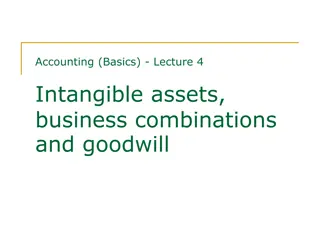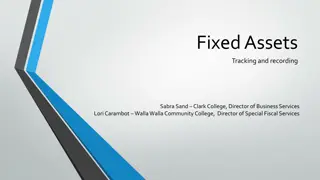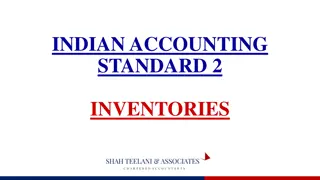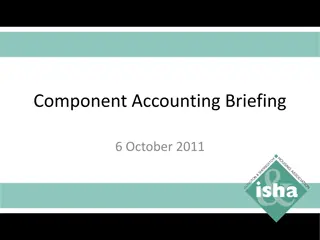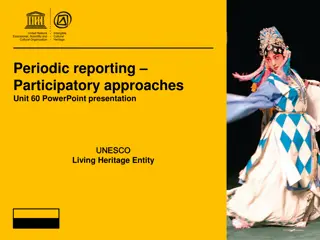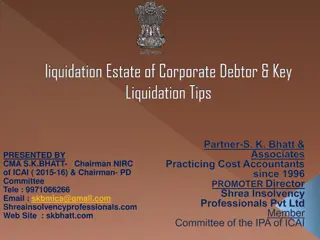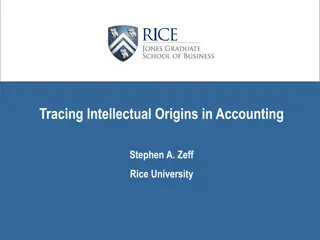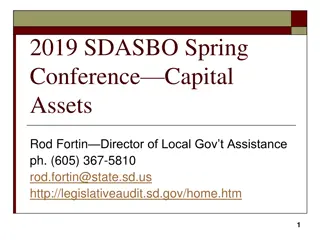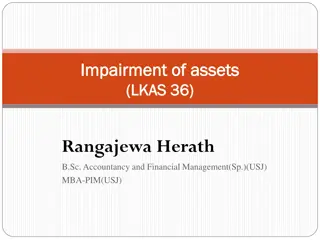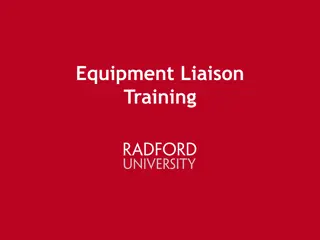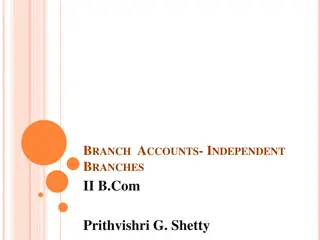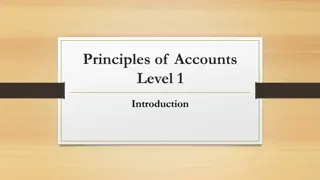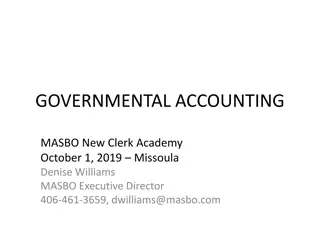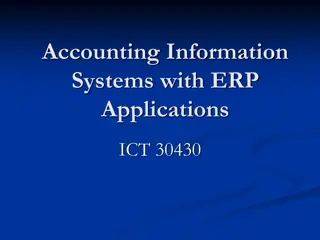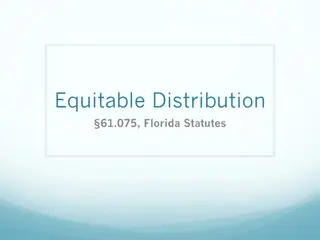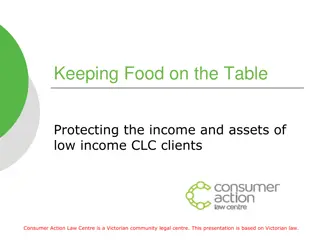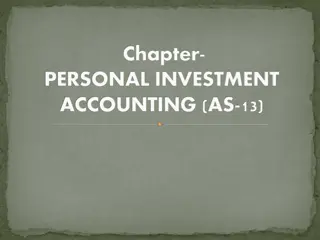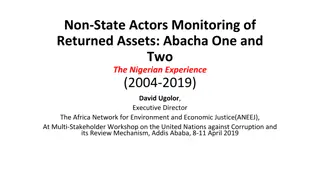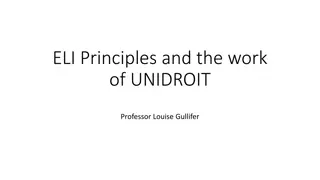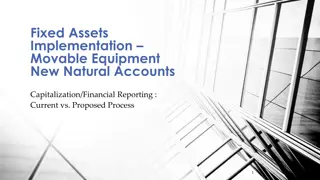Understanding Intangible Assets in Indian Accounting Standard 38
This content delves into Indian Accounting Standard 38 focused on intangible assets. It covers definitions, scope, recognition, initial measurement, subsequent measurement, and treatment of self-acquired intangible assets. The guidelines on research and development expenditure, subsequent expenditures, and more are also discussed in detail.
Download Presentation

Please find below an Image/Link to download the presentation.
The content on the website is provided AS IS for your information and personal use only. It may not be sold, licensed, or shared on other websites without obtaining consent from the author. Download presentation by click this link. If you encounter any issues during the download, it is possible that the publisher has removed the file from their server.
E N D
Presentation Transcript
1 INDIAN ACCOUNTING STANDARD 38 INTANGIBLE ASSETS
2 Intangible Assets Definition An intangible asset is An identifiable Non monetary asset Without physical substance Identifiability Lack of physical substance Capable of being separated/divided from entity and sold/transferred; or Cannot be seen or touched Where tangible and intangible asset is inseparable, judgement is required to determine which element is more significant Contractual or legal right Damania & Varaiya
3 Scope Recognition & Initial Measurement Subsequent Measurement Useful life, amortisation and impairment Retirement and Disposal Disclosure Damania & Varaiya
4 Recognition Meets definition of Intangible Asset Probable future economic benefits i.e. more likely than not Costs can be measured reliably Damania & Varaiya
5 Initial Measurement All intangible assets shall be measured initially at cost The ascertainment of cost of intangible will depend on its mode of acquisition: 1. Separate acquisition 2. Business combination 3. Internally generated 4. Exchange of non monetary asset 5. Government grant Damania & Varaiya
6 Self acquired intangible assets Cost includes Add Purchase Cost & directly attributable expenditure on preparing asset for its intended use Import Duties Non refundable purchase taxes Less Trade discounts and rebates Implicit interest in deferred payment Cost does not include: Cost of introducing new product or service, costs of conducting business in a new location or with new class of consumers and general overhead costs Damania & Varaiya
7 Research and development Treat research expenditure as revenue expenditure Capitalise development phase expenditure if recognition criteria fulfilled. Otherwise treat as revenue expenditure Damania & Varaiya
8 ANY SUBSEQUENT EXPENDITURE SHOULD BE CAPITALISED ONLY WHEN ORIGINAL RECOGNITION CRITERIA IS SATISFIED. EXPENDITURE NOT ELIGIBLE FOR CAPITALISATION SHALL BE EXPENSED OUT Subsequent Expenditure Damania & Varaiya
9 Subsequent Measurement Cost Model Revaluation Model At cost Fair value less Any amortisation less Any amortisation less Impairment losses. less Impairment losses Damania & Varaiya
10 Amortisation and impairment Finite useful life Test for impairment whenever indication Amortise over useful life Test for impairment at least annually and Whenever there is indication Indefinite useful life No amortisation Damania & Varaiya
11 Retirement and Disposals An entity shall de-recognise PPE on disposal or when no future economic benefits are expected from its use or disposal. Damania & Varaiya
12 Disclosures For each class of intangible asset distinguishing internally generated and other intangibles: Whether useful lives are definite or indefinite Useful lives or amortisation rate and method used Gross carrying amount and accumulated amortisation at the beginning and at the end of the period Reconciliation of carrying amount at the beginning and at the end of the period Amount of R & D expensed out Damania & Varaiya
13 Major differences between IND AS 38 and AS 28 AS 28 1. Only cost model is available IND AS 38 1. An entity can choose between cost model and revaluation model 2. There is rebuttable presumption that useful life will not exceed 10 years 2. Useful life of assets can be finite or indefinite 3. Goodwill arising on amortisation is amortised over period of 5 years. Goodwill arising on consolidation is not amortised but tested for impairment 3. Goodwill having an indefinite useful life is not amortised and tested for impairment annually or whenever there is indication Damania & Varaiya
14 THANK YOU


